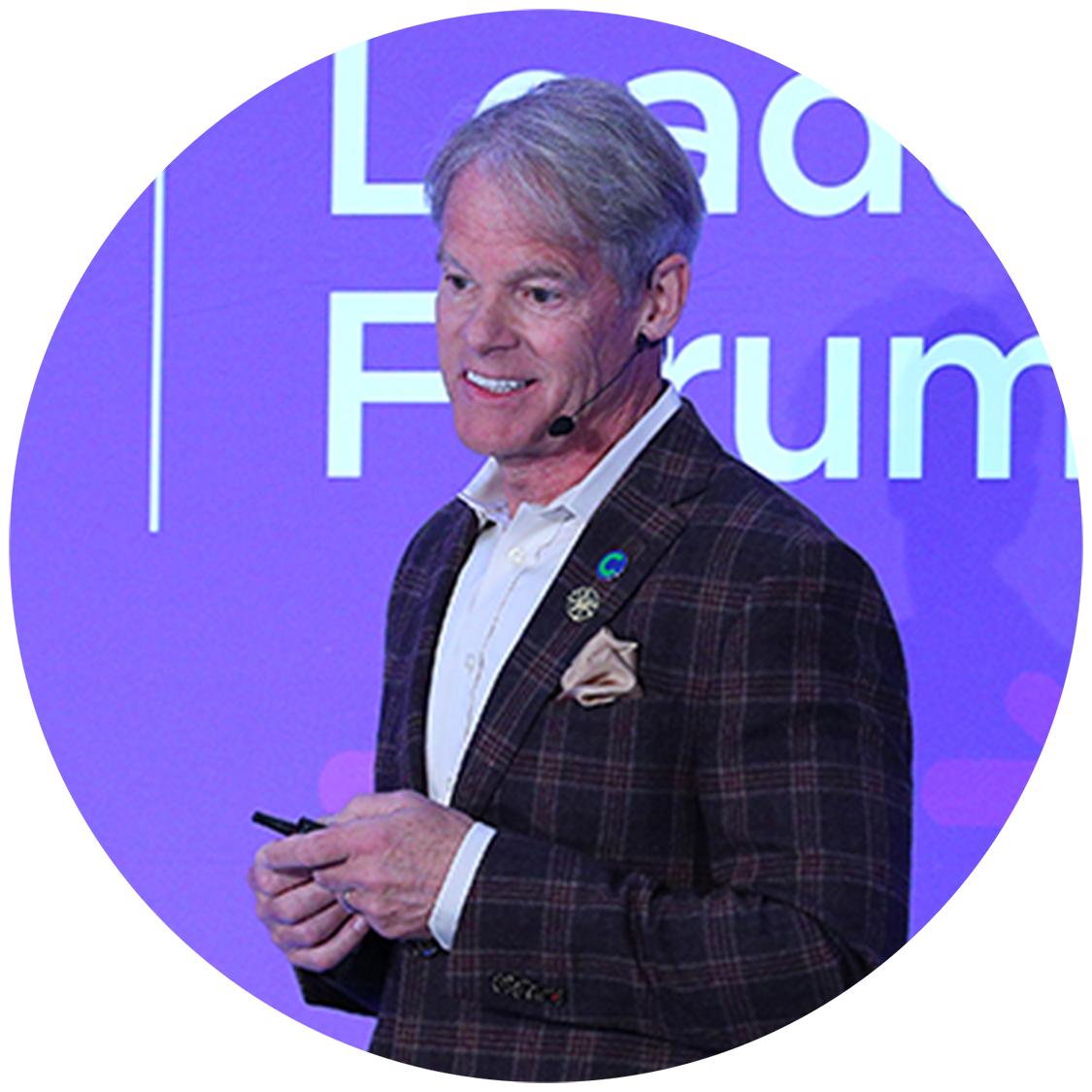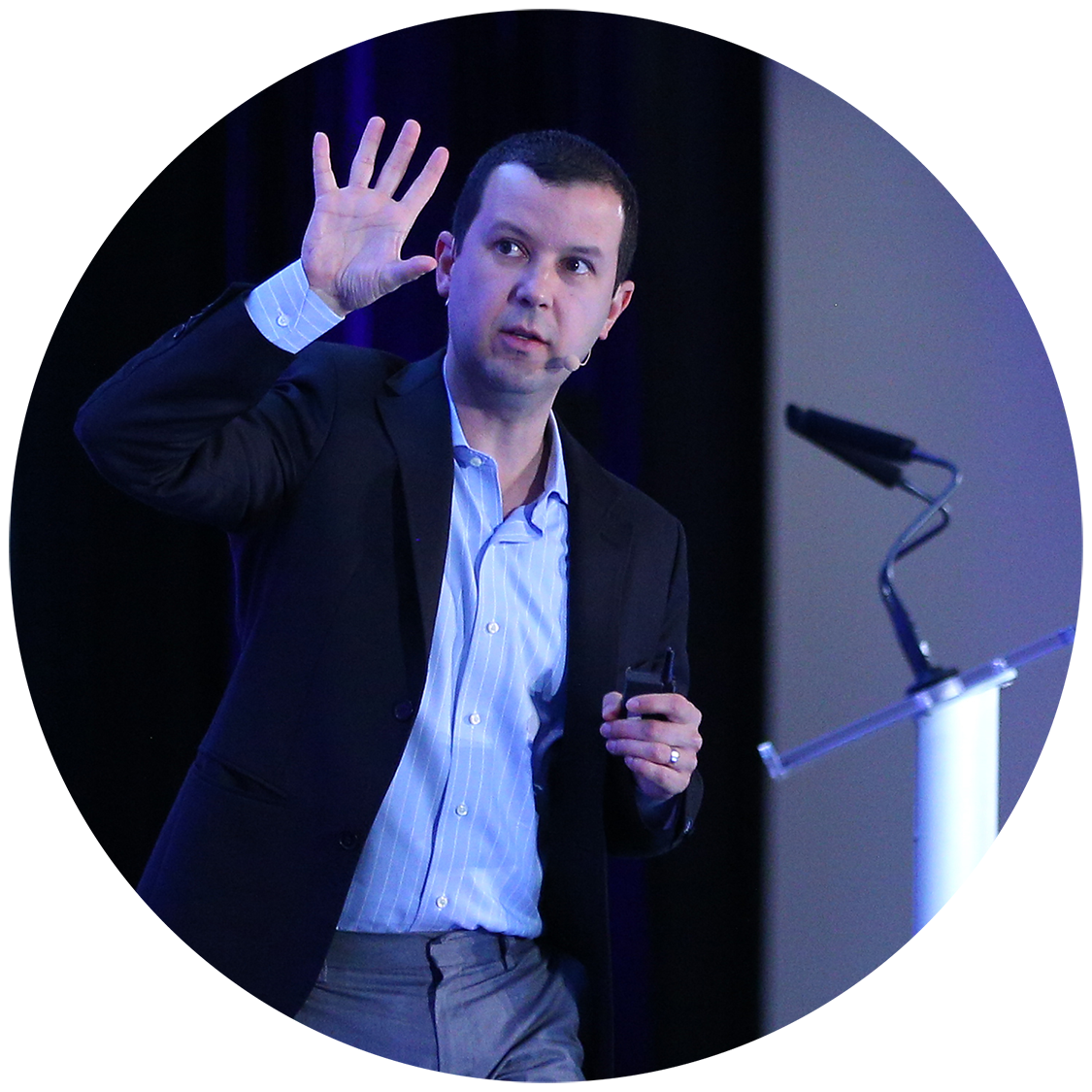 Contrary to headlines, retail isn’t dead or dying, but the blisteringly competitive landscape means business leaders must double down on discerning what customers want in this digital age and then delivering the experience they crave to survive and thrive. To complicate matters, it’s getting harder to differentiate an experience from a product and a product from an experience. Digitally native companies—especially those with a direct relationship to their customers—have led the way.
Contrary to headlines, retail isn’t dead or dying, but the blisteringly competitive landscape means business leaders must double down on discerning what customers want in this digital age and then delivering the experience they crave to survive and thrive. To complicate matters, it’s getting harder to differentiate an experience from a product and a product from an experience. Digitally native companies—especially those with a direct relationship to their customers—have led the way.
At the NACS Leadership Forum held in February in Miami Beach, Florida, thought leaders shared insights to help retailers navigate the customer experience journey from observing and understanding customers, to shaping formats and processes, to executing the in-store experience with buy-in from their teams.
The forum, which drew more than 225 convenience retailers and suppliers, kicked off with a panel discussion entitled “Help Your Company Thrive by Creating Good Jobs.” Retailers who invest in their workforce and make consistent, concerted efforts to empower and energize employees are ahead of the game when it comes to finding high-quality staff and retaining them, which translates into superior value for employees, customers and investors. It’s what’s called the Good Jobs Strategy, and it’s based on research from MIT professor Zeynep Ton.
Chet Cadieux, chairman and CEO of Tulsa, Oklahoma-based QuikTrip, and Sarah Kalloch, executive director of the Good Jobs Institute, joined NACS President and CEO Henry Armour on stage for a candid discussion of QuikTrip’s embrace of Good Jobs principles in its business, where strong investment in QT employees has translated into lower costs, higher profits and greater customer satisfaction.
In her work, Kalloch sees a lot of retailers struggling with labor issues, profitability, dirty stores and losing customers to the competition. “Companies that really get out of this vicious cycle invest in people. They have great training. They have great schedules,” Kalloch said.
No matter what tech comes your way, you will be able to survive because you know how to take care of your customers.
The four pillars of the Good Jobs strategy are:
- Focus and simplify
- Standardize and empower
- Cross-train employees
- Operate with slack (having extra employees on hand to shift among tasks as needs arise)
The base of the Good Jobs strategy is values and leadership, Kalloch explained. “The best employers are 100% committed to their customers, and they see the value in their employees.”
QuikTrip sets clear expectations for employees, Cadieux said. “Every employee knows exactly what success looks like and what failure looks like,” he said. Employees cross-train on jobs throughout the store. There are standard procedures for things like cleaning countertops, and store layouts are standardized across the chain. Paperwork is sent to headquarters.
“We operate with 30% slack on every shift,” Cadieux said. The chain has about 24,000 employees, and about a third are relief employees or floaters who can quickly step in to fill in for absent employees, no matter the store location.
QuikTrip has a rigorous hiring, onboarding and training process. The chain only hires about 1% of applicants. Once on board, every new hire is assigned a trainer who shadows them in the store. Trainers’ success is intertwined with those of the employees they are showing the ropes. “We’re big believers in performance-based pay,” Cadieux said. “So those trainers are on a reward system that rewards them for generating good employees,” but “they aren’t punished for pulling the plug on somebody” who isn’t working out.
Armour asked Cadieux to share the moral reason behind QuikTrip’s embrace of the Good Jobs Strategy.
“For me that’s very personal,” said Cadieux, whose father, Chester, founded the company with former classmate Burt Holmes in 1958. “I grew up working in the stores with these guys and gals. We are so blessed with people for staying so long,” he said. “I have a huge sense of debt owed to our store team members. I feel like we owe them an opportunity at success. That’s our purpose. That’s the reason I get out of bed each morning … I feel that’s a debt that’s owed by QuikTrip and personally by my family.”
 David Allison, author and the founder of Valuegraphics, shared four main profiles of c-store shoppers—workaholics, loyalists, pit-stop adventurers, everyday debt-driven—based on his customized research for NACS.
David Allison, author and the founder of Valuegraphics, shared four main profiles of c-store shoppers—workaholics, loyalists, pit-stop adventurers, everyday debt-driven—based on his customized research for NACS.
OBSERVE: UNDERSTAND THE CUSTOMER
Customer journeys are a progression of touchpoints that collectively add up to the experience customers get when they engage with companies. Seeing the world as their customers do helps leading companies better serve customer needs.
On day two of the Forum, David Allison, author, human behavior expert and founder of Valuegraphics, outlined the values convenience store patrons have in common, based on first-of-its-kind data from a global study. It’s common to hear how millennials have different character traits than Gen X, or how age determines how we think, but it’s wrong, Allison said. Understanding your customers is best achieved through the lens of Valuegraphics.
Allison’s research measured 420 variables, digging into what people truly value. Using algorithmic survey-targeting techniques to collect information from 500,000 surveys, Allison said his data are an exact representation of the real world, with 95% accuracy and a margin of error of 3.5%.
Today’s most dangerous disrupters, they are not stealing customers, they are stealing customer activities from the established companies.
In simple terms, the data show how closely demographic groups relate and agree—or don’t agree—on 420 variables. Looking at baby boomers, Gen X and millennials, not one of the groups agreed more than 15% when looking at the 420 variables. Put simply, the labels we use to better understand the population further distance ourselves from true understanding.
Demographics are valuable but only as a description or definition of who you want to influence or talk to. Psychographics, such as how people behave around specific events, products, etc. are also valuable, but Valuegraphics add a third data set that Allison posits will help you change behavior.
Allison surveyed 1,850 respondents who shop in convenience stores three times a week to come up with four main profiles of a c-store shopper:
- 51% Workaholics
- 17% Loyalists
- 15% Pit-Stop Adventurers
- 12% Everyday Debt-Driven
- 5% Splinter groups
 Don Rhoads, NACS Board member and president of The Convenience Group LLC, moderated this year's event.
Don Rhoads, NACS Board member and president of The Convenience Group LLC, moderated this year's event.
Workaholics love being a workaholic, and they work as many as 80 hours a week—or it feels like they do. Allison said, “They loathe wasting time since it’s time they could be working.” Workaholic customers want delivery, text ordering—essentially, they want more speed, “so anything you can do to help them save time will be a hit.”
Loyalists are habitual and routine. “They will drive by the same stores, always sit in the same spot at one restaurant they like, and they value long-term relationships,” said Allison. Since they are store and product loyal, consistency is everything to them, so if you do change, do so slowly.
Pit-Stop Adventurers comprise 15% of the ecosystem. These folks love excitement: They want to taste everybody’s food, try everything and have a fear of missing out. “They have a need to touch base and expect familiarity of basic products.” These customers want experiential items and services, and anything too expensive or wasteful is a deal breaker for them—what matters to them is the experience.
The 12% that comprise Everyday Debt-Driven “are reactionists and want it now and will pay a premium for it—which is why they are also debt-driven,” Allison told the crowd. They gravitate toward consumption-based purchases and would want drive-thru and made-to-order specialty foods.
Listen Up
Missed the Leadership Forum? Tune into Convenience Matters to hear podcast hosts Jeff Lenard, vice president, strategic industry initiatives, NACS, and Carolyn Schnare, director, strategic initiatives, NACS, interview Leadership Forum keynote speakers David Allison (episode No. 209), Michel Falcon (episode No. 212) and Chris Walton (episode No. 211). Also catch their chat with Zeynep Ton, MIT professor and co-founder of the Good Jobs Institute (episode No. 205). Browse these and more episodes at www.conveniencematters.com/episodes.
 Thales Teixeira discussed how retailers can decouple the customer vaclue chain to achieve success in this time of disruption.
Thales Teixeira discussed how retailers can decouple the customer vaclue chain to achieve success in this time of disruption.
SHAPE: REDESIGN THE BUSINESS
In the afternoon keynote on day two, Thales Teixeira, author, former Harvard Business School professor and co-founder of consul tancy Decoupling.co, shared with attendees a framework for understanding and responding to disruption by eliminating consumers’ pain points and reimagining a more efficient and bespoke customer experience.
“No matter what product or service you’re selling or what the customer group is, all businesses offer activities to customers that can be classified into one of three types,” said Teixeira. Is it a value-creating activity (eating good food, for example), a value-eroding activity (buying groceries, filling out forms with personal information, for instance) or a value-capturing activity (payments, etc.)?
“Decoupling,” Teixeira said, “is the breaking of the links between customer activities—often by a digital player—that have been traditionally provided together.” For example, videogame fans no longer need to go to the store to buy physical copies of games. Instead, they can play games for free on services like Zynga, subscribe to online game-streaming services like Steam and even watch other gamers play in real time with services like Twitch, then they decide if they want to buy the game, just watch for fun or learn how to master it.
“There is a recipe for disruption,” Teixeira told attendees. Reducing costs for the consumer at each stage, whether that’s money, time or effort, “dictates whether customers will choose to decouple or not,” Teixeira said. “First, the most important part:”
- Map out the customer value chain (all activities your customer needs to engage to acquire, use and dispose of your products).
- Identify the type of value in each of these three activities (value-creating, value-eroding, value-charging).
- Find the weakest link in that chain—the activity that customers are least happy about. “That is the beachhead. That is where you’re going to try to break apart and steal that activity,” Teixeira said.
- Increase the specialization forces—reduce the monetary, time or effort costs for those customers to do that activity. Eventually you’ll start to steal away customers from established companies.
- Anticipate the competitive response.
 Michel Falcon, entrepreneur and restaurant owner, says businesses must integrate their values into the hiring process. His company's five values are embroidered into the seams of every apron worn by staff.
Michel Falcon, entrepreneur and restaurant owner, says businesses must integrate their values into the hiring process. His company's five values are embroidered into the seams of every apron worn by staff.
Best Buy, for example, has adapted to the fact that electronics shoppers were going into the stores to find and test products and looking up reviews and prices at Amazon.com or other e-commerce sites while in the store—and then purchasing online instead of at Best Buy. Now Best Buy is a showroom, and it charges manufacturers shelf-slotting fees to showcase their products. “What you see here is a parking lot for brands,” Teixeira said. “What Best Buy did was rebalancing,” he explained. “To fend off disruption, co-existence with your attacker is key.”
Teixeira outlined the four drivers of disruption:
- Customers disrupt markets, not startups. The technology in itself is not disruptive, it’s that consumer behavior changes.
- Technology changes rapidly and can speed growth, but the disruptive ingredient is business model innovation, not technology alone. Focus on the business model innovation, which helps you know which technology to employ to speed up that business.
- Understand what’s going on in your industry by mapping out the customer value chain.
- Lack of innovation is a customer-centricity problem not an R&D problem. Telling your people, “let’s be more innovative,” or telling your suppliers, “I need something new” rarely works because the problem is that the organization is not focusing enough on what its customers want.
“Today’s most dangerous disrupters, they are not stealing customers, they are stealing customer activities from the established companies,” Teixeira said.
EXECUTE: ALIGN YOUR TEAM
Rewiring a company to provide leading customer experiences requires active engagement from company leaders and frontline staff. Day three of the forum featured insights from Michel Falcon, entrepreneur, founder of the People-First Culture philosophy, author, restaurant owner and investor.
Falcon is at the helm of a $40 million company, running several restaurants and employing more than 300 people. “Regardless of the industry or size or whatever we have in common, it is our responsibility as leaders to manage the behaviors and expectations of our people,” said Falcon. If a company wants to build an admired brand, it needs to identify what it wants the market to see and feel when they see that brand. It has to evoke emotion and that emotion has to be positive. To get there, companies must embrace a people-first culture.
 In addition to thought-provoking keynote sessions, the NACS Leadership Forum brings together convenience retailers and suppliers for one-on-one networking meetings.
In addition to thought-provoking keynote sessions, the NACS Leadership Forum brings together convenience retailers and suppliers for one-on-one networking meetings.
“A people-first culture is simple to understand,” Falcon said. “It’s about building a business that is admired by customers, employees and the communities you reside within.” After all, he said, “We want our employees to be engaged every day—not just on payday.” So why, if this is what employers want, do companies fall short?
Falcon advises companies to start with purpose: “What is the purpose of your company? And it can't be about making money—your team won’t align around it.” His company’s mission: Consistently deliver seamless experiences (to anyone, whether customers, colleagues or suppliers).
Most companies have a mission, vision and values—“But how often do we integrate values into hiring?” Falcon asked. He has his company’s five values embroidered into the seams of every apron worn by staff and visits his restaurant locations regularly, always quizzing staff on the values. If they forget, he has them stop what they are doing and memorize them before coming back onto the floor.
“If employees know the purpose of our company and then create alignment and bring purpose to the team as individuals, then authentic engagement will follow,” Falcon shared. And be sure to focus on engagement first before focusing on new products and processes. “People don't fail, processes do,” he stated. “The education people need to succeed is vital, and if they are not succeeding we need to ask if the education we provided is not serving them well.”
Falcon believes in investing heavily in learning and development. “If our team members are trained well to deliver great experiences that will feed the customers.” And your learning and development program can’t be static since your customers are changing often. Let’s face it, Falcon stated, “Companies do have money for learning and development, we are just choosing to spend it somewhere else.”
Join us next year at the NACS Leadership Forum, February 10-12, 2021, in Miami.
Five Ways to Find Success
The “Store of the Future” is a term that gets bandied about a lot in retail, and it’s one that’s fraught with peril because it’s used to describe very different ideas. Chris Walton, chief executive officer and founder of Omni Talk and Third Haus, broke down the term into three concepts for Leadership Forum attendees as part of his day two morning keynote, “Know Thyself: Five Ways to Find Success in This New Era of Convenience Retailing.” To discover the insights from Walton’s presentation, read “Know Thyself, Know Thy Customer” from the February issue of NACS Magazine.